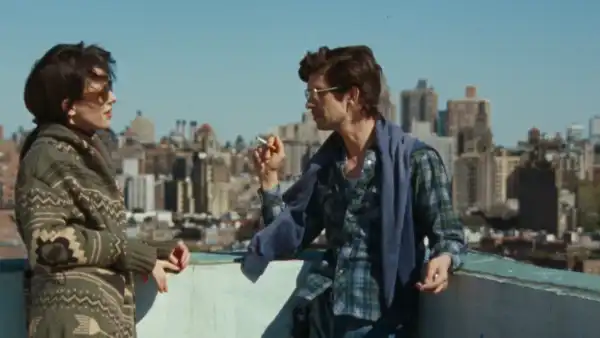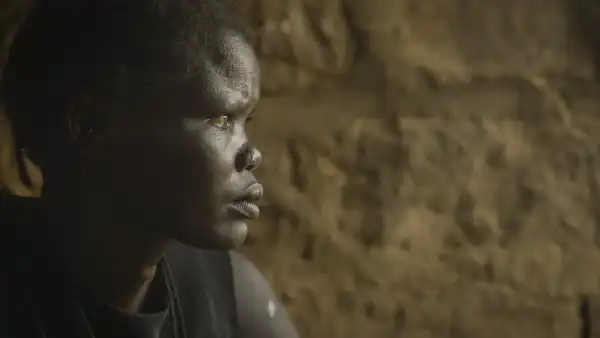
Save this storySave this storySave this storySave this story
Why create moving pictures if those depicted stay silent? The people in Ira Sachs’s movies invariably articulate themselves fully, even when there’s abundant activity (revisit the intensely energetic “Passages”), but in his startling and powerfully inventive recent drama, “Peter Hujar’s Day,” dialogue becomes the core event. It’s essentially a biographical portrayal of the photographer named in the title (portrayed by Ben Whishaw), who, on the 19th of December, 1974, was questioned by the writer Linda Rosenkrantz (Rebecca Hall), at her residence, situated on the Upper East Side. Rosenkrantz was conceiving a publication regarding the routines of artists and requested Hujar to detail what he’d experienced the preceding day, from waking until sleep. Rosenkrantz ultimately shelved her concept, and the audio recording of the interview was misplaced, but, in 2019, a written record emerged at the Morgan Library, the repository of Hujar’s archives. It was issued by Magic Hour Press in 2021, and that very text largely constitutes the basis of Sachs’s cinematic piece.
The particular day that Hujar communicated to Rosenkrantz, the eighteenth of December, was an eventful one. It commenced with a call from a publisher, followed by another from Susan Sontag, and the publisher’s appearance at Hujar’s studio, located at East Twelfth Street and Second Avenue. There followed a visit to Allen Ginsberg’s place, just a short distance away, to capture his image for the Times; several conversations via telephone, an encounter with the writer Glenn O’Brien, an evening meal shared with Vince Aletti (a journalist for this publication), and a stroll to acquire food for it; and finally, a lengthy stretch of time spent in his photographic lab, developing and making prints, which included the recently acquired Ginsberg portraits.
In the discussion, Hujar does not merely list this flurry of undertakings but imbues it with theatrical importance, psychological significance, and societal relevance by elaborating on the intimate connections and histories—the foundations of career, companionship, satisfaction, and funds—that are at the core of the day’s happenings. The product is an elevated reimagining of candid chitchat, lighthearted yet sincere, relaxed and thought-provoking. Hujar offers a sequence of personalities: in conjunction with Sontag and Ginsberg, he speaks of William S. Burroughs (in a harsh, possibly libellous manner) and also alludes to Janet Flanner (a longtime writer for this magazine), Lauren Hutton, Fran Lebowitz, and Robert Wilson (each of whom he photographed). When describing a phone exchange with the painter Ed Baynard, Hujar derides him as talkative, refers to him as “totally insane,” and appends, “If this ever appears in print, I hope his name is attached.” Rosenkrantz counters with mock outrage, “What do you mean, ‘if’?”
Within Sachs’s movie, none of Hujar’s packed schedule is actually presented visually. Instead, Peter and Linda are generally witnessed within her residence, during the dialogue, speaking, continuing to speak, from morning light to evening darkness. But, although the movie is mainly verbal, it remains a profoundly visual creation. Sachs films the pair across a range of settings and positions—seated confronting each other in her lounge, positioned in the kitchen space, resting upon her bed. Peter is seen astride a windowsill, relaxing on a settee, seated at the piano stool, ambulating, looking through her volumes and musical records, and activating a record (Tennessee Jim’s “Hold Me Tight”) for them to dance. They proceed to the patio and ascent to the roof area, and their lasting bond, their effortless communication and clear intimacy, offers the gathering a refined feeling of partnership, of imaginative collaboration.
Rosenkrantz did not produce her book; however, in a way, Sachs finalizes it in her stead—not in terms of breadth, of course, but concerning insight. Transforming the interview transcript into a filmic form gives it animation across three different levels. The dialogue’s initial life cinematically is the drama portrayed on screen, the staging of Peter and Linda’s conversation. For Sachs, the exchange is richer than a straightforward confluence of thoughts, just as his images are more meaningful than basic visual captures of Whishaw and Hall’s finely calibrated showings. The movie’s shots, while skillfully unobtrusive, are carefully structured to impart sculptural strength to conversational moments. Lengthy stretches draw focus to the cognitive effort behind Hujar’s self-examination, and Sachs’s structuring (with cinematography courtesy of Alex Ashe) draws the duo closer to suggest the closeness of their exchange. Noteworthy is the infrequent employment of close-ups. Sachs presents his subjects’ intelligence and sentiments, their creative spirit, as intrinsic to their physical existence: he circumvents the common representation of “talking heads” and embodies the notion of expressive forms.
The subsequent manner in which the movie breathes life into the dialogue is through the recollection of the day being described. There are absent flashback segments or historical film segments in “Peter Hujar’s Day,” and no portrayals of individuals other than Peter and Linda. However, the progression of events that unfolds creates powerful visualizations within the viewer’s consciousness; indeed, the movie’s most memorable visualizations may be unreal ones. Peter possesses a visually attuned mind, a conversationalist who uses photographic language, detailing his environs with accuracy and creativity. His explanation of picking up takeaway fare at a Chinese eatery gains a humorous, expansive quality due to a detailed portrayal of another patron, who was scribbling on a compact piece of paper and whom he noticed minutes later, at a shop, instrument still in his grasp. This acute awareness to specifics suggests that his narratives surrounding his period with Ginsberg, his evening meal with Aletti, his engagement within the darkroom generate forceful images for the viewer—a parallel visual path to the one manifested on screen. This sequence of imagined images is made increasingly impactful via the psychology underlying Peter’s monologue: his ardent contemplations regarding his social circles and his world of vocation, his impassioned perception of his objectives with a lens.
The third cinematic existence that the movie endows upon the conversation is the duration of its production. Sachs gives focus, from the beginning of the movie, to its contrived nature, showing the structural elements of its creation; the action commences with an image of the clapperboard employed to signify the scene being recorded and to help coordinate the auditory component. By choosing to film using film rather than digital technology, Sachs selectively incorporates, during the cut, the unfinished opening and ending sections derived from rolls of film. A particular scene clearly displays the audio person’s microphone stand alongside the clapperboard. The progression alternates openly from point to point across the space and from position to position of those featured, even while the conversation continues unceasingly. (There are a few wardrobe adaptations evident from frame to frame.) These methods of capturing and organizing establish subtle but evident structural lines within the movie’s surface and draw the divisions to the forefront. The consequence is to shift Rosenkrantz’s discussion with Hujar—and indeed the subjects and the people who are referenced—into the immediacy of the present.
By rendering Hujar’s presence so palpable, Sachs draws consideration to a devastating absence: the artist succumbed to AIDS, in 1987, at the age of fifty-three. (Rosenkrantz, having been born in the same year as Hujar, remains alive, at the age of ninety-one.) Hujar’s passing is never stated overtly, but selections from Mozart’s Requiem within the audio underscore the haunted atmosphere created by Sachs’s use of the present. “Peter Hujar’s Day” stands as a requiem for Hujar and the numerous other figures within the downtown artistic community who were claimed by AIDS, casualties as much of the stigma and mistreatment of gay individuals that defined the time. Sachs, without any direct references in his movie, evokes this history and Hujar’s part in it. The particular day that Hujar experienced and described, in the December of 1974, manifests not as a collection of unrelated events but as a detailed example, both sociologically informative and artistically inventive, of a holistic world, one which disappeared with the premature passing of numerous of its essential innovators. Hujar’s demise was notably remembered through a photograph captured by David Wojnarowicz in the moments following his death. Sachs’s movie has even greater resonance through its omission of that, and for constructing a work of personal sorrow—not an image of death but a work of existence. ♦
Sourse: newyorker.com







